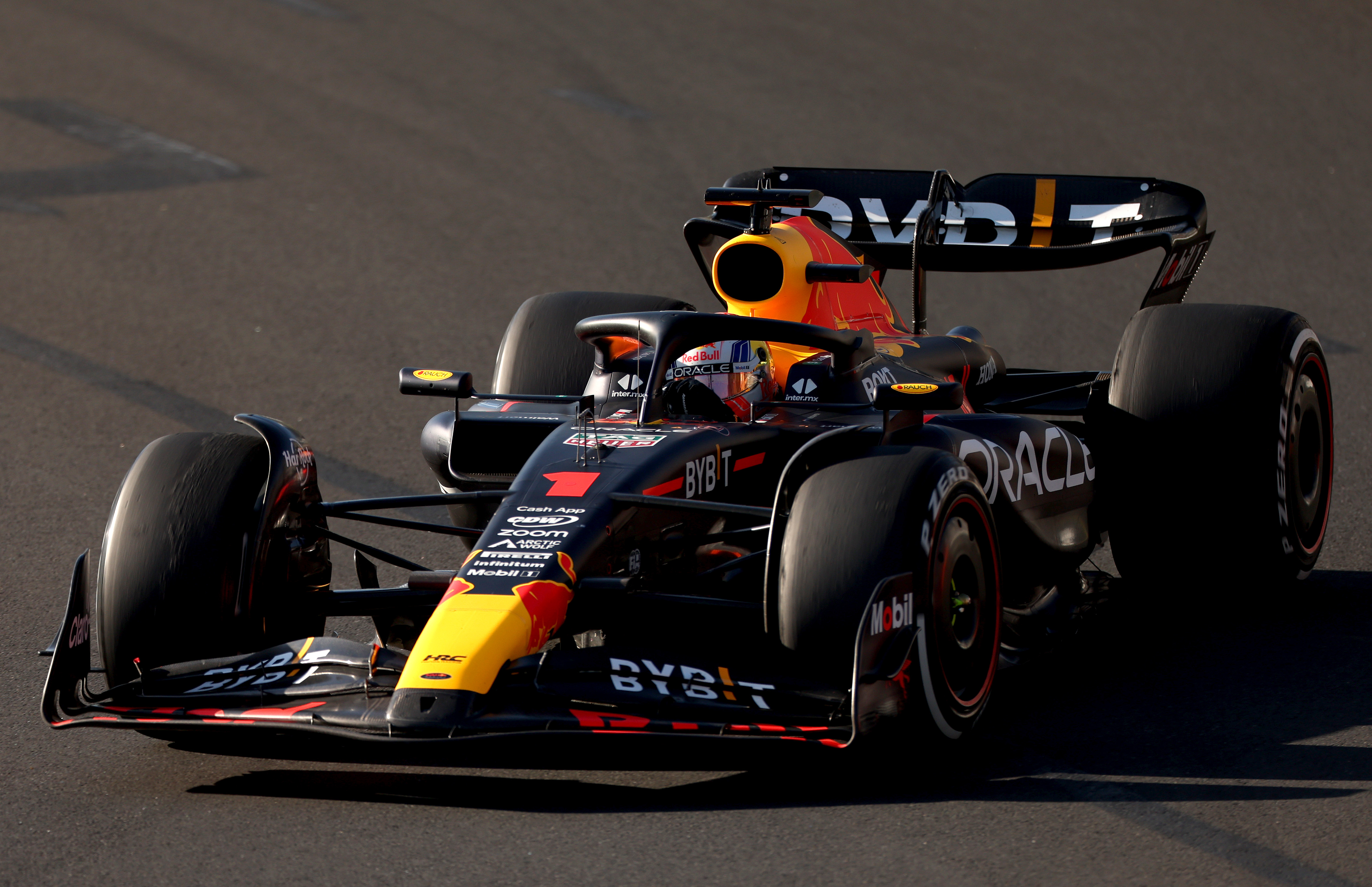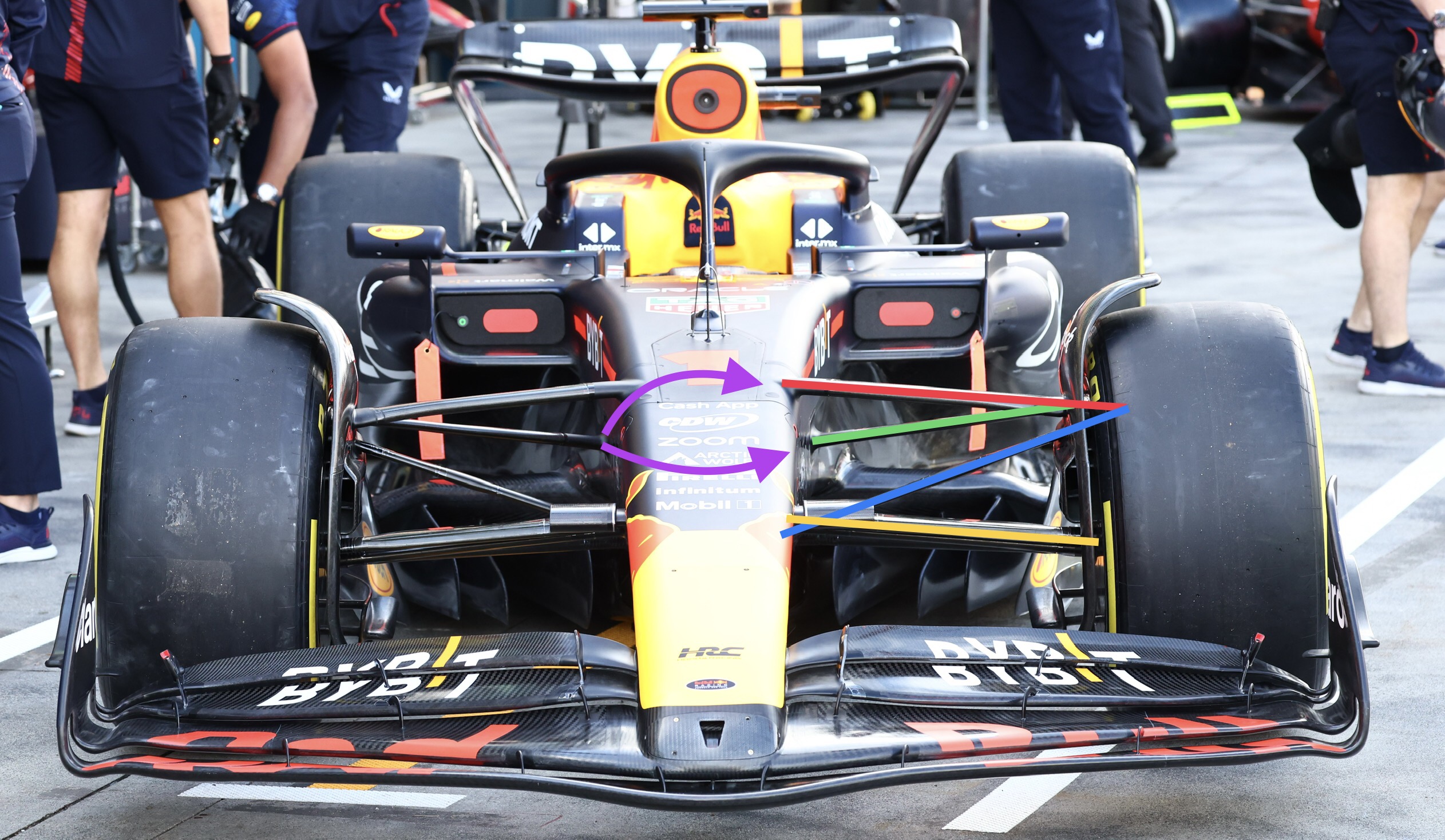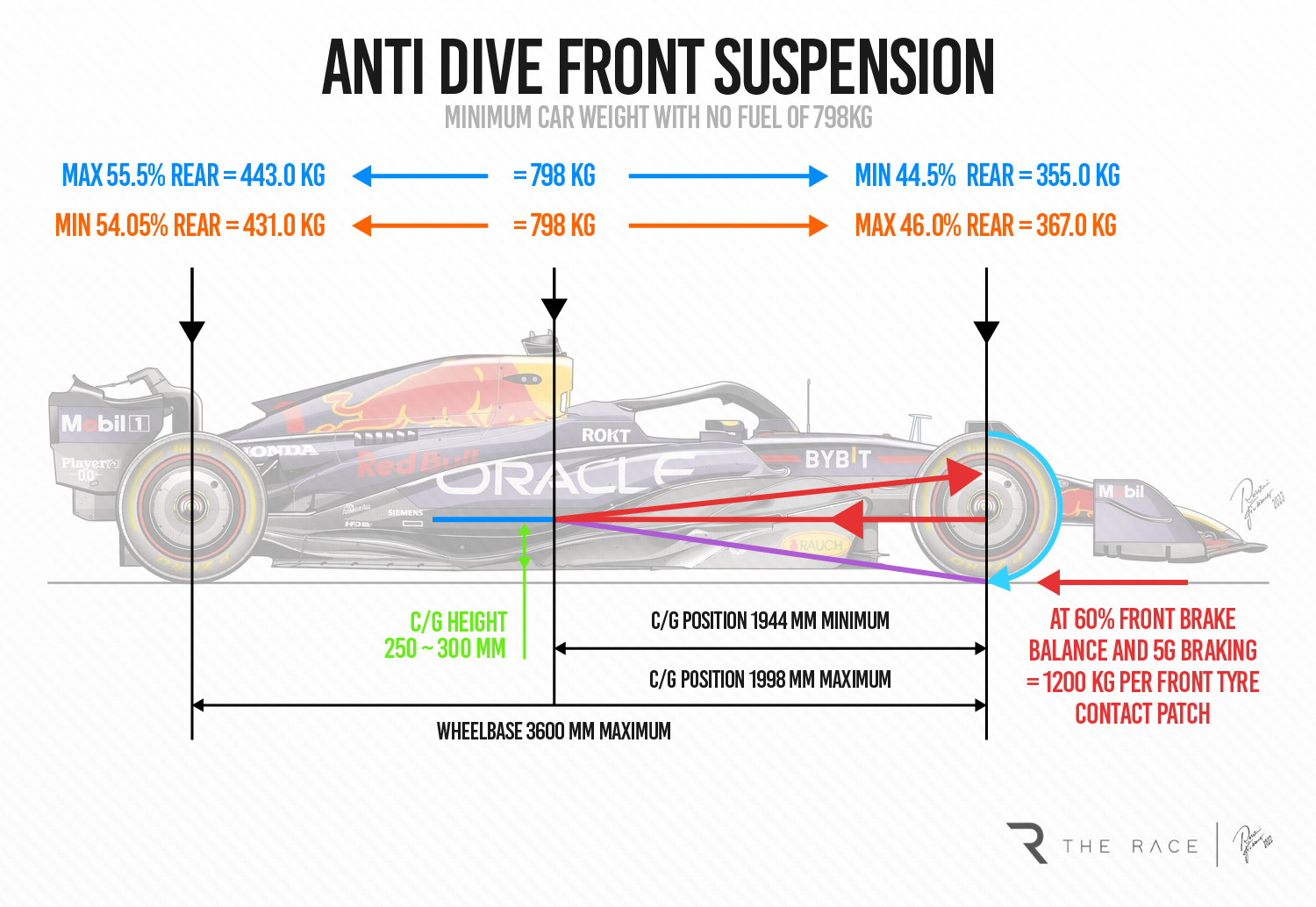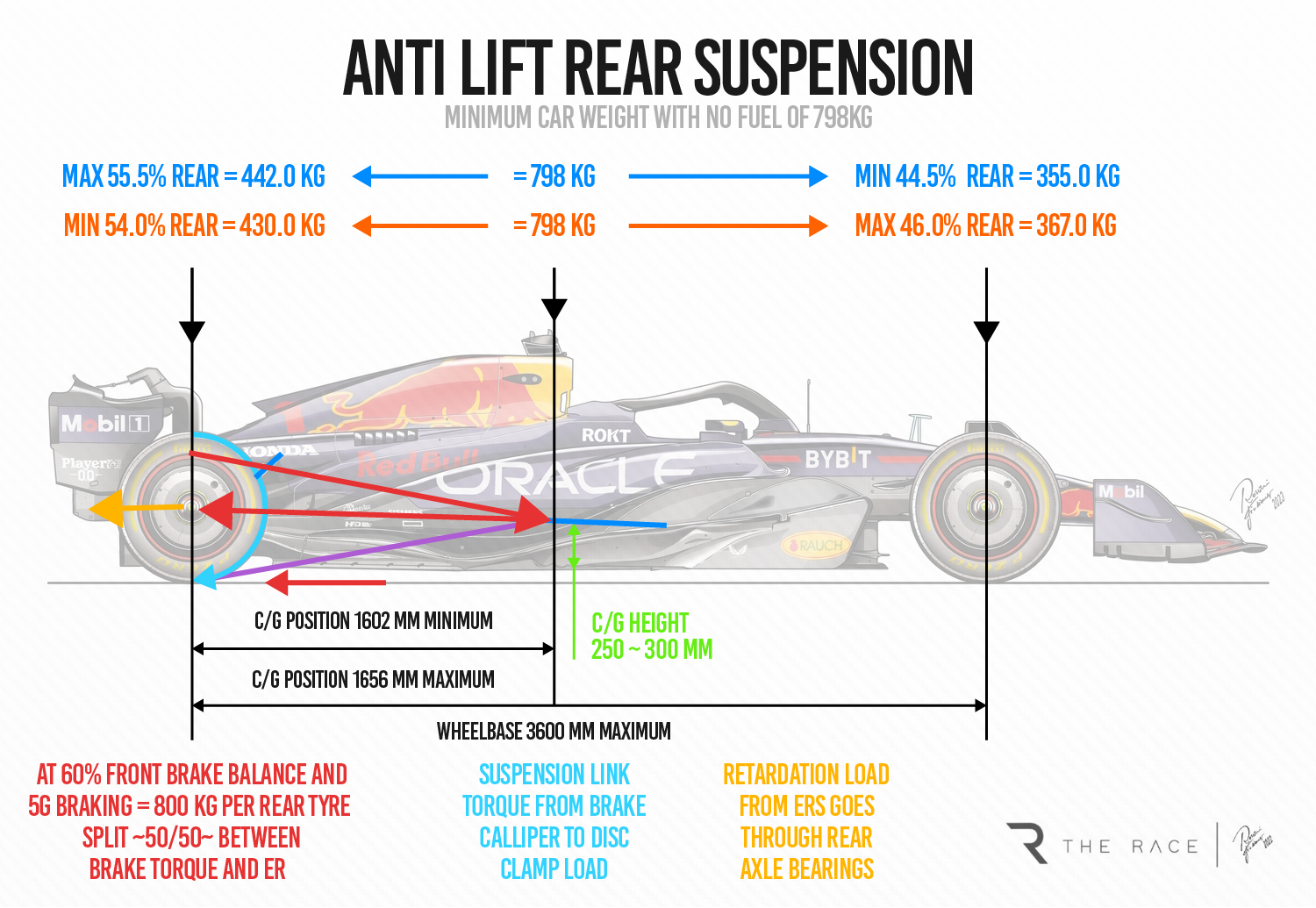Most of the talk over the last couple of years has been about the aerodynamics of the Red Bull. It’s certainly got on top of these new-for-2022 Formula 1 ground effect regulations better than anyone else.
This is proved by the fact that any rival teams changing their initial design concept have followed the Red Bull philosophy. For Williams and especially Aston Martin, this has led to a big performance step. But if you always follow others, you will still end up behind them, meaning you sometimes must go out on a limb and pursue your own vision.
Adrian Newey revealed last year in an exclusive interview with The Race that he focused on the suspension design and left the aerodynamics to very capable others in the Red Bull design group. He still had some input into the aero platform profile and its characteristics relative to ride height change and offered his opinion on what needs to be achieved, then set about controlling that as much as possible within the suspension design.
With these ground effect cars producing a very high percentage of their downforce from the underfloor, it’s critical that the car is not moving around needlessly. When you consider that half a millimetre of front ride height change or one millimetre of rear ride height change would be used as a centre of pressure tuning tool, a couple of millimetres of random movement under braking could very easily have a major influence on the driver’s confidence. And that is at just the time they really need to have a handle on what the car is going to do when the steering wheel is turned.

Within the regulations, the centre of gravity (CofG) location is fairly tightly controlled. It can be altered by around 1.5%, which as a distance on a 3.6-metre wheelbase is 54mm, so not really a lot to play with. But the teams will still use this small amount of movement to balance the car.
If you simply didn’t bother trying to control this load change and allowed the ride height to change, then the aerodynamic change on top of that would more or less make the car undriveable. So it’s that old saying ‘there is no magic bullet’. Instead, it is about making it all work as one.
So how has Red Bull gone about achieving that?
F1 cars have a braking ability in excess of 5g. The load change onto the front axle can be in excess of 250~300kg, which all comes off the rear. As that braking g level reduces, the load reduces, so again it is the transient effect you want to minimise.

As you can see from my curved magenta arrows pointing to the inboard top wishbone pickup points, the front leg (red line) is a lot higher than the rear leg (green line).
This height difference in the upper wishbone inboard pick-ups has a major influence on anti-dive, so in effect keeps the front of the car higher during braking. The lower wishbone front and rear leg and steering track rod (yellow line) doesn’t have much inboard pick-up point height difference, so Red Bull has focused on controlling the transient height of the car during braking using the top wishbone.

On the front, Red Bull has a suspension geometry giving the maximum anti-dive that is practically possible. It’s very difficult to see the inboard wishbone pick-ups in detail, but if you take some fairly rudimentary lines and follow them through, they all meet up at around the centre of gravity.
If you try to achieve the same anti-dive characteristics using an angle on the bottom wishbone, its virtual line means that it will be higher than the CofG. Where it intersects with the top wishbone will mean a much shorter side-view swing arm. When you have this, it also reduces drivers’ feel of the car under braking.
On the rear, it is all about anti-lift. Keeping the front up to reduce the increase in front aerodynamic load is one thing, but keeping the rear low also reduces the losses of rear load and is just as important, if not more so.

As you can see from my curved magenta arrows again pointing to the inboard top wishbone pick-up points, the front leg (green line) is a lot lower than the rear leg (red line). This height difference in the upper wishbone inboard pick-ups has a major influence on anti-lift, so in effect keeps the rear of the car lower when the load comes off during braking.
The lower wishbone front and rear leg (yellow line) has a major influence on anti-squat and doesn’t look like it has much height difference. This means Red Bull is not really too worried about the car squatting a little when the power is applied.
This initial squat will help with traction, and in turn rear tyre wear, which will mean the tyre won’t overheat as much causing rear tyre degradation.

Again running the side-view geometry lines through as accurately as possible, we can see that with the same CofG position as I used for the front suspension, both the top and lower wishbone more or less all connect up in that position. This means that the rear of the car shouldn’t move too much with varying longitudinal loads.
However, the rear is not quite as simple as the front. There are two braking mechanisms on the rear of the car; one is the brakes themselves, which by virtue of simply trying to stop the rotation of the rear tyre put a torque into the wishbone system (blue rotation arrow).
The other is gathering the recharge energy during braking. This is done through the drive line and in effect is applied to the rear suspension through the axle bearings. With the lower wishbone at roughly the same height as the centre line of the rear wheel, all this load (orange arrow) or at least most of it, will be reacted by the bottom wishbone. However, the tyre contact patch still gets both loads.
All of that said, it might not be quite as simple as that. If you take into account the geometry of the front top wishbone and the pullrod front suspension (blue line) and apply the induced brake torque (light blue rotation arrow), this will put the rear leg of the top wishbone in tension under braking.
Nothing is ever 100% rigid so it is possible you could benefit from the stiffness of this leg. If, for example, it was to get a little longer during initial braking, it would reduce the castor slightly and by doing that probably lift the front of the car a little, overcoming the height change generated from the load change during braking. This, in turn, would overcome most of the unavoidable tyre squash from that extra load.
Something similar could be happening on the rear. But with the variation in how the braking load is applied and the fact that the rear load is reducing, it would be a little harder to achieve. But it’s not impossible.
There are probably many reasons why Red Bull went from a pushrod front suspension and pullrod rear suspension to the opposite, and this could be just one of them.




